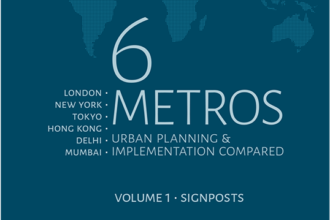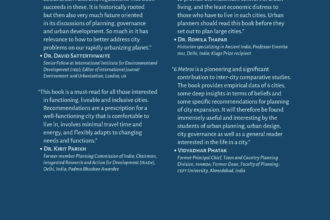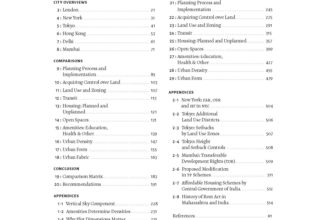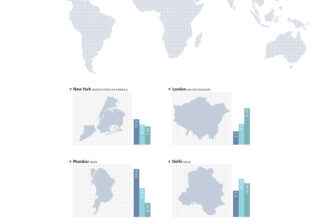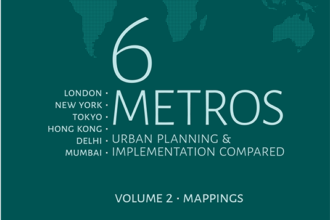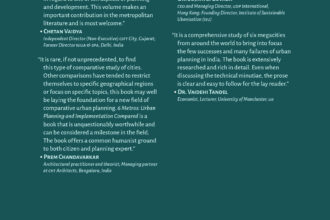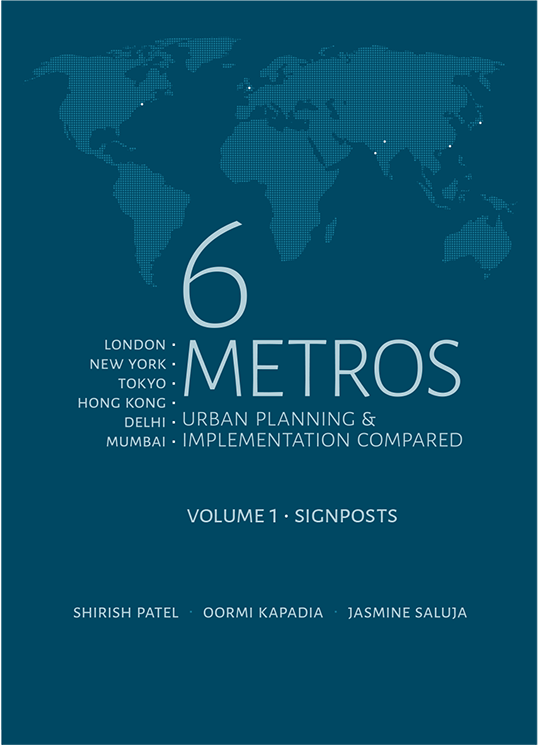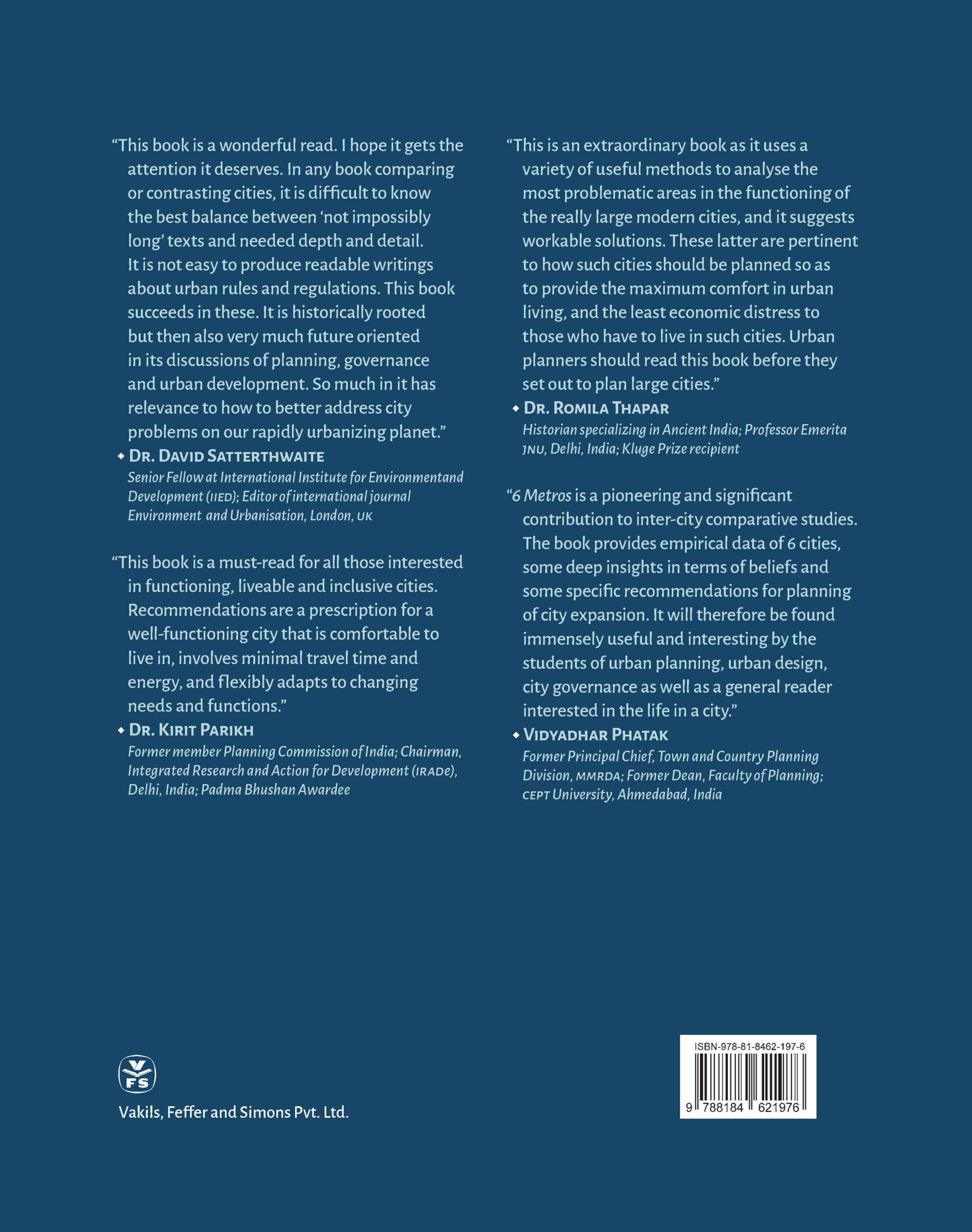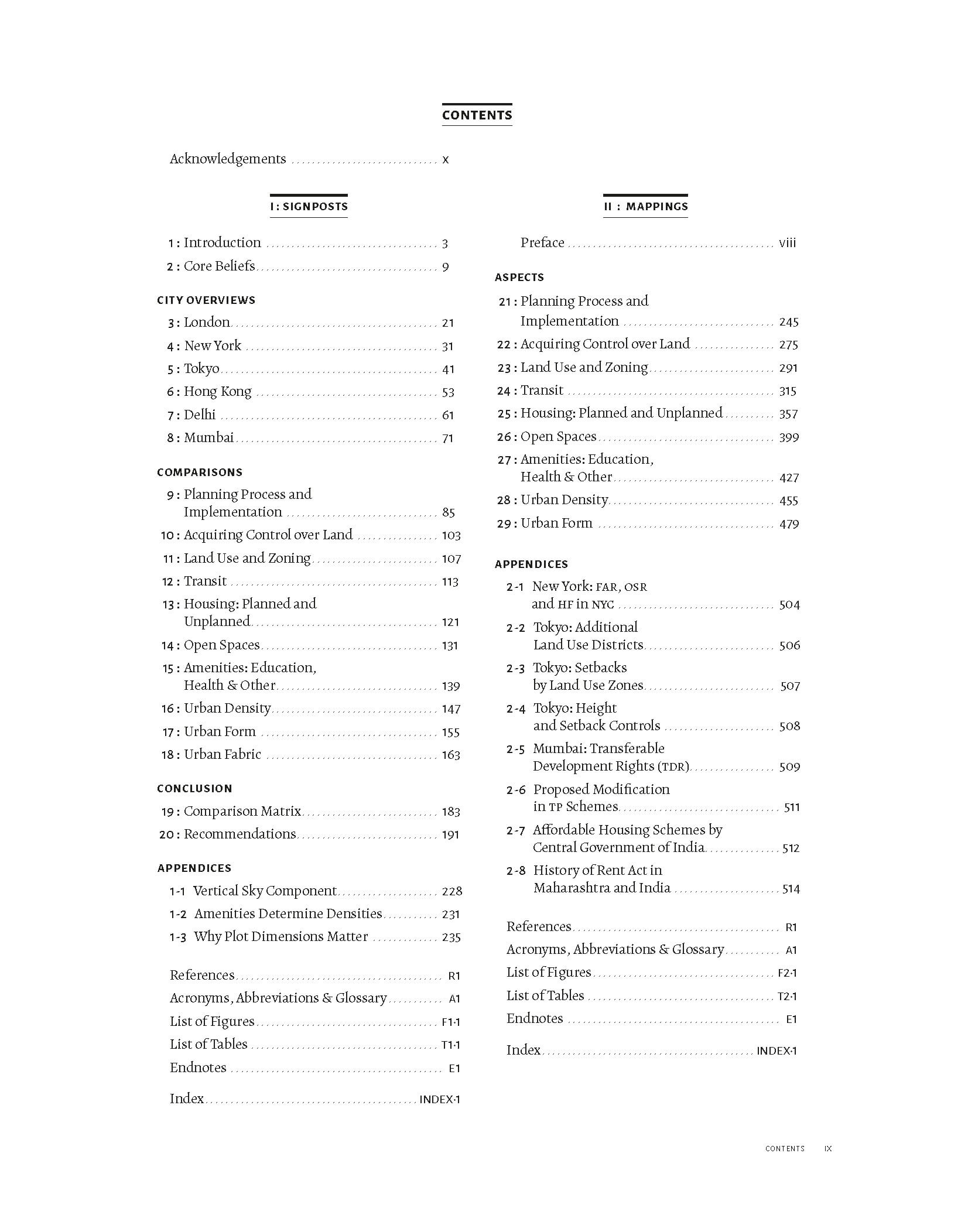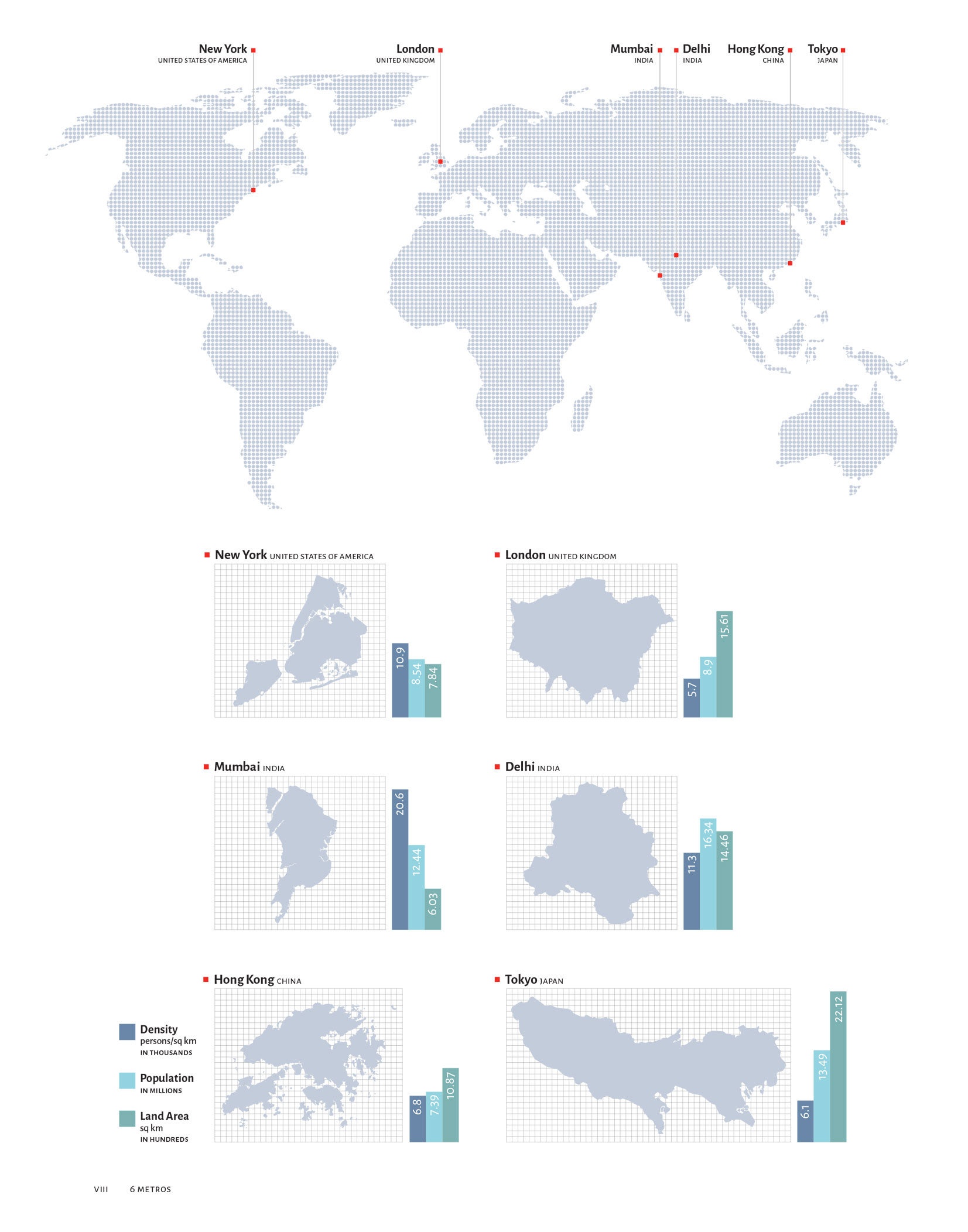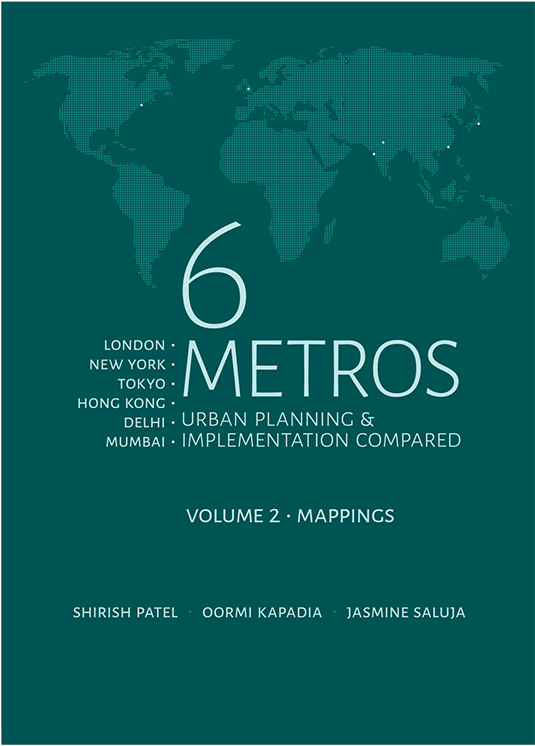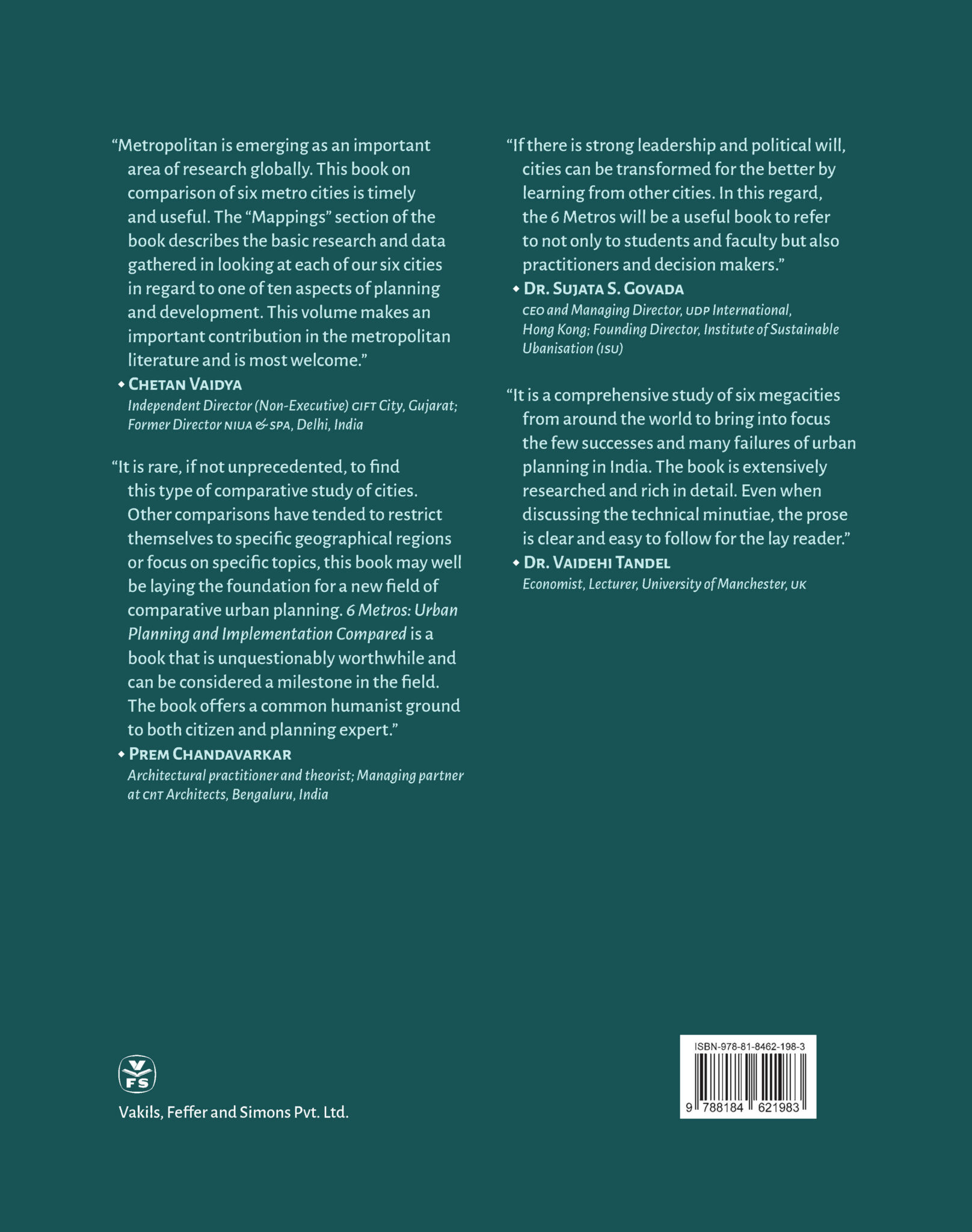In any large city, what are the constituents of careful planning and implementation, and good management thereafter? What should we do to make a person’s functioning in the city effortless and the city a joy to live in, for all classes of citizens?
Every city is beset with its own particular problems. It may deal with these in a variety of ways. There can be varying degrees of success or outright failure. Either way there is surely something for others to learn from that experience. The book looks at the six metropolitan cities of London, New York, Tokyo, Hong Kong, Delhi and Mumbai. Each of our six chosen cities functions within a democratic framework, with a periodically elected political leadership. The book compares and analyses different aspects of the city: governance, and acquisition, transit, housing, open spaces, other amenities including health and education, urban density, urban form and neighbourhood plans which decades later produce what we call the urban fabric of a locality. We are told that in the coming decades there will be massive urbanisation and most of this will be in developing countries which can expect a doubling or more of their existing urban settlements. The book concludes with a set of recommendations that could be used while planning city extensions or new cities, focusing on India, but possibly relevant to other countries as well.
₹12,000
$295 in other countries
In any large city, what are the constituents of careful planning and implementation, and good management thereafter? What should we do to make a person’s functioning in the city effortless and the city a joy to live in, for all classes of citizens?
Every city is beset with its own particular problems. It may deal with these in a variety of ways. There can be varying degrees of success or outright failure. Either way there is surely something for others to learn from that experience.
The book looks at the six metropolitan cities of London, New York, Tokyo, Hong Kong, Delhi and Mumbai. Each of our six chosen cities functions within a democratic framework, with a periodically elected political leadership. The book compares and analyses different aspects of the city: governance, land acquisition, transit, housing, open spaces, other amenities including health and education, urban density, urban form and neighbourhood plans which decades later produce what we call the urban fabric of a locality.
We are told that in the coming decades there will be massive urbanization and most of this will be in developing countries which can expect a doubling or more of their existing urban settlements. The book concludes with a set of recommendations that could be used while planning city extensions or new cities, focusing on India, but possibly relevant to other countries as well.
8.25’’ x 10.5’’ Portrait
Volume 1: 324 pages
Volume 2: 364 pages
Hard Bound





